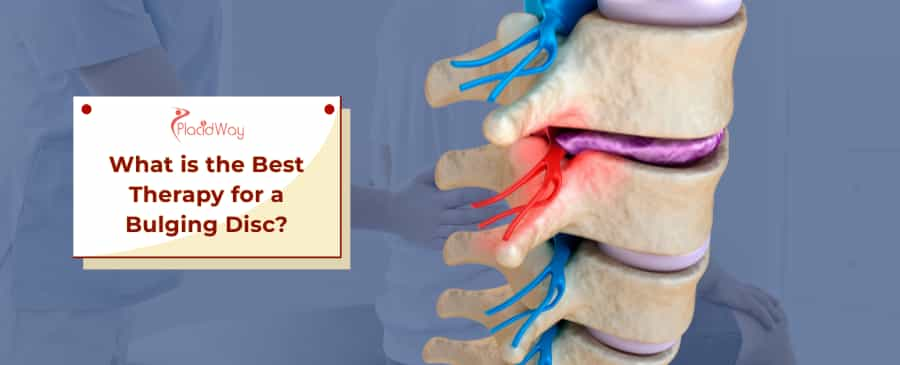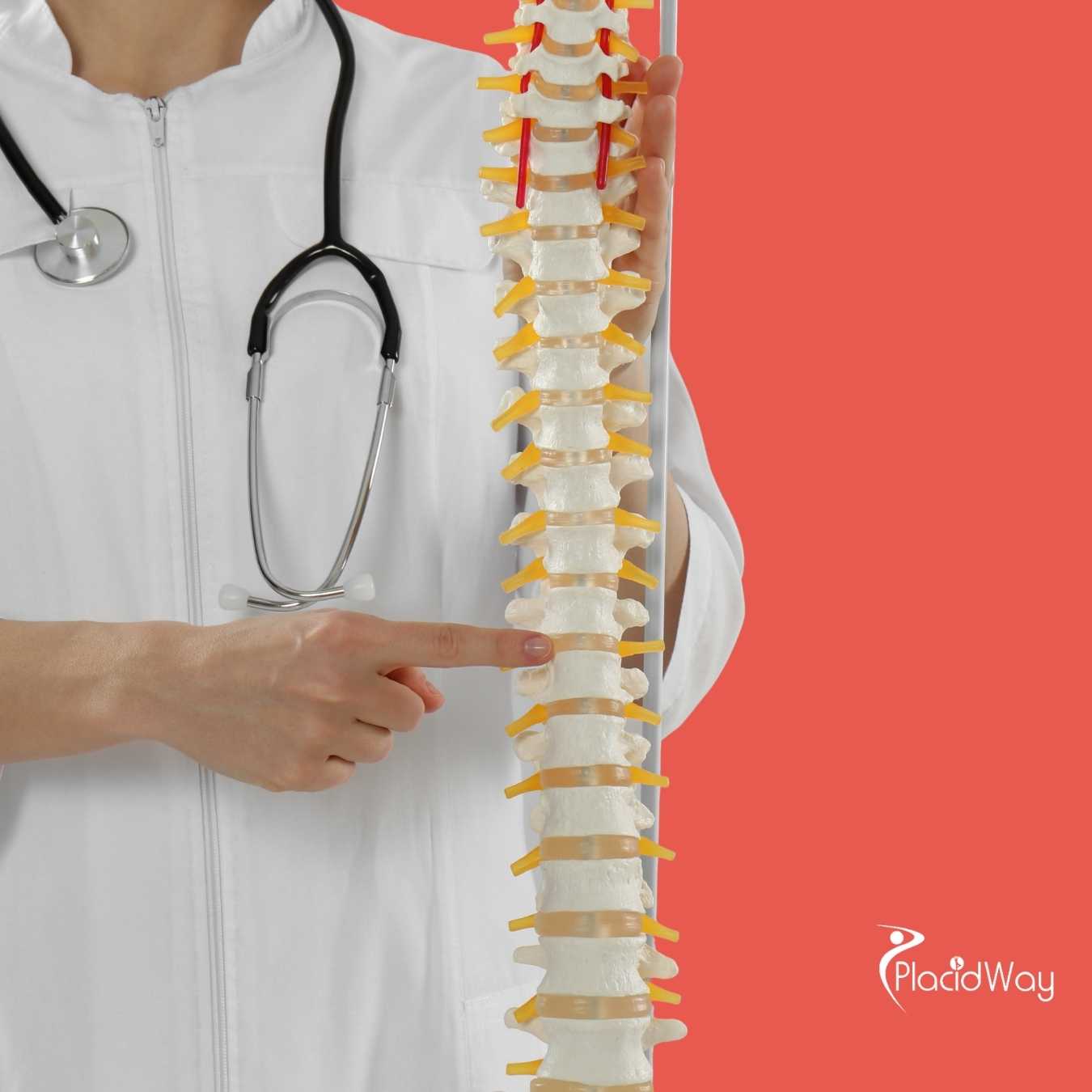Best Treatments for Bulging Disc: Effective Therapies for Pain Relief

If you're experiencing persistent back pain, numbness, or weakness, you might be wondering about the best way to find relief. A bulging disc is a common culprit behind such discomfort, occurring when the soft, gel-like center of a spinal disc pushes against its outer wall, often irritating nearby nerves. It's a condition that can significantly impact your daily life, making even simple movements challenging.
The good news is that for most people, effective treatments are available to manage the symptoms and promote healing. This guide will walk you through various therapeutic approaches, from non-invasive methods to surgical considerations, helping you understand your options and take control of your spinal health. We'll explore what truly works to alleviate pain and restore function, providing insights to help you make informed decisions about your care.
What is the best therapy for a bulging disc?
There isn't a single "best" therapy that applies universally to everyone with a bulging disc. The most effective approach is highly individualized, depending on the severity of symptoms, the location of the disc bulge, and the patient's overall health. However, a common starting point for many is conservative management, which focuses on reducing pain and inflammation while restoring mobility.
This conservative pathway typically includes:
- Physical Therapy: A cornerstone of treatment, focusing on strengthening core muscles, improving posture, and increasing flexibility to support the spine.
- Medication: Over-the-counter pain relievers, anti-inflammatory drugs, or muscle relaxants can help manage acute pain. In some cases, stronger prescription medications might be used.
- Activity Modification: Avoiding activities that aggravate symptoms and learning proper body mechanics for lifting and moving.
For individuals with more persistent pain or nerve-related symptoms, interventional pain management techniques like epidural steroid injections may be considered to reduce inflammation around the affected nerve root. The goal is always to improve the quality of life and prevent long-term complications, often allowing the body to heal naturally over time.
Can a bulging disc heal on its own?
Yes, in many cases, a bulging disc can indeed improve or "heal" on its own, especially with appropriate conservative management. The body has an impressive capacity for self-repair. When a disc bulges, it often triggers an inflammatory response. Over time, and with reduced stress on the spine, this inflammation can subside, and the disc material may recede, reducing pressure on nearby nerves.
The healing process doesn't mean the disc returns to its perfectly original state, but rather that the symptoms resolve, and the individual can return to normal activities without pain. This typically occurs over a period of 6 to 12 weeks, though it can vary. Patience, combined with adherence to physical therapy and avoiding aggravating movements, is crucial during this recovery phase. While some improvement can happen naturally, proactive steps greatly enhance the chances of a full recovery from bulging disc pain.
What exercises are good for a bulging disc?
Specific exercises play a vital role in managing and recovering from a bulging disc. The goal is to strengthen the muscles that support your spine, improve your posture, and gently decompress the affected area. Always consult a physical therapist before starting any new exercise regimen to ensure it's appropriate for your specific condition.
Commonly recommended exercises include:
- McKenzie Exercises: These extension-based exercises, such as prone press-ups, aim to centralize the disc bulge and relieve nerve pressure. They are highly effective for many individuals with disc issues.
- Core Strengthening: Exercises like pelvic tilts, bird-dog, and gentle planks help build strong abdominal and back muscles, providing better support for your spine.
- Gentle Stretching: Hamstring stretches, cat-cow, and knee-to-chest stretches can improve flexibility and reduce muscle tension around the spine.
- Walking: Low-impact activities like walking can improve circulation and promote healing without placing excessive stress on the disc.
Consistency and proper form are key to gaining benefits and avoiding further injury. A tailored exercise plan from a professional ensures you are performing movements that will aid your recovery and strengthen your back effectively to manage your bulging disc symptoms.
Is physical therapy effective for a bulging disc?
Physical therapy is undeniably one of the most effective non-surgical treatments for a bulging disc. A physical therapist conducts a thorough assessment to design a personalized treatment plan aimed at addressing your specific symptoms and functional limitations. Their expertise is crucial in guiding you through recovery.
The therapy typically involves a combination of:
- Manual Therapy: Techniques such as massage, mobilization, and manipulation to improve joint movement and reduce muscle spasm.
- Therapeutic Exercises: As mentioned, these focus on strengthening, stretching, and improving core stability to support the spine.
- Education: Learning proper posture, body mechanics, and ergonomic principles to prevent future injury and manage daily activities.
- Modalities: Heat, ice, ultrasound, or electrical stimulation may be used to reduce pain and inflammation in the short term.
By actively participating in physical therapy, individuals can significantly reduce pain, restore range of motion, and gain the tools necessary to manage their condition independently, making it a cornerstone of bulging disc recovery.
When should surgery be considered for a bulging disc?
For the vast majority of people with a bulging disc, surgery is not necessary. Conservative treatments are usually effective in resolving symptoms. However, there are specific circumstances where surgical intervention may become a necessary option for a bulging disc.
These circumstances include:
- Failed Conservative Treatment: If severe pain, numbness, or weakness persists for several months despite trying various non-surgical therapies like physical therapy, medication, and injections.
- Progressive Neurological Deficits: If the nerve compression from the disc bulge leads to worsening muscle weakness, loss of sensation, or difficulty walking.
- Cauda Equina Syndrome: This is a rare but severe condition requiring emergency surgery, characterized by loss of bowel or bladder control, numbness in the saddle area, and severe leg weakness.
Surgical procedures, such as microdiscectomy, aim to remove the portion of the disc that is compressing the nerve. The decision for surgery is a serious one, made in close consultation with a spine specialist, weighing the potential benefits against the risks involved.
What is the role of medication in treating a bulging disc?
Medication plays a supportive, rather than curative, role in the treatment of a bulging disc. Its main purpose is to alleviate symptoms such as pain, inflammation, and muscle spasms, making it easier for patients to engage in physical therapy and daily activities. Medications help to create a window of opportunity for other therapies to be effective.
Commonly used medications include:
- Over-the-Counter Pain Relievers: Non-steroidal anti-inflammatory drugs (NSAIDs) like ibuprofen or naproxen can reduce both pain and inflammation. Acetaminophen can help with pain.
- Muscle Relaxants: Prescribed to alleviate painful muscle spasms that often accompany a bulging disc.
- Oral Corticosteroids: A short course may be prescribed for severe inflammation, offering stronger anti-inflammatory effects.
- Neuropathic Pain Medications: For nerve pain (sciatica), medications like gabapentin or pregabalin may be used.
It's important to use medications as directed by a healthcare professional, as they come with potential side effects. While they provide crucial relief, they don't address the underlying mechanical issue of the bulging disc itself, which is where physical therapy and lifestyle modifications come in.
Can chiropractic care help a bulging disc?
Many individuals with a bulging disc seek relief through chiropractic care. Chiropractors use a hands-on approach, primarily focusing on spinal manipulation (adjustments) to correct misalignments and restore proper function to the spine. The philosophy behind chiropractic care is that proper spinal alignment can reduce nerve irritation and allow the body to heal more effectively.
For a bulging disc, chiropractic techniques might include:
- Spinal Adjustments: Gentle, controlled forces applied to specific joints to improve range of motion and reduce pressure on nerves.
- Spinal Decompression Therapy: Non-surgical traction that gently stretches the spine, potentially creating negative pressure within the disc to encourage fluid and nutrients back into the disc and alleviate pressure.
- Soft Tissue Therapy: Techniques to relax tense muscles surrounding the affected disc.
- Lifestyle Advice: Guidance on posture, exercise, and ergonomics to support spinal health.
While chiropractic care can be very effective for some, it's crucial to consult with a chiropractor experienced in treating disc conditions and to ensure their approach aligns with your overall treatment plan. Always discuss your symptoms thoroughly to ensure the treatment is appropriate for your specific bulging disc condition.
What are the non-surgical treatment options for a bulging disc?
The vast majority of individuals suffering from a bulging disc find significant relief and recovery through non-surgical methods. These conservative treatments aim to reduce pain, inflammation, and nerve compression while promoting healing and improving spinal function. Starting with the least invasive options is typically recommended.
Comprehensive non-surgical approaches include:
- Rest and Activity Modification: Avoiding activities that exacerbate pain, but not complete bed rest, which can be detrimental. Gentle movement is encouraged.
- Physical Therapy: Tailored exercises to strengthen core muscles, improve flexibility, and posture.
- Medications: NSAIDs, muscle relaxants, or neuropathic pain drugs to manage symptoms.
- Spinal Injections: Epidural steroid injections can deliver anti-inflammatory medication directly to the affected nerve root, offering significant pain relief.
- Chiropractic Care: Spinal adjustments and decompression therapy to improve alignment and reduce nerve pressure.
- Acupuncture: Some individuals find relief from chronic pain through acupuncture, which involves inserting thin needles into specific points on the body.
- Heat and Ice Therapy: Applying heat can relax muscles, while ice can reduce inflammation and numb pain.
Combining several of these approaches under the guidance of healthcare professionals often leads to the best outcomes for managing a bulging disc without resorting to surgery.
Where can I find affordable bulging disc treatment abroad?
For individuals seeking cost-effective solutions for a bulging disc, medical tourism offers a viable option. Many countries have developed robust healthcare infrastructures that provide excellent quality spinal treatments, often at a fraction of the cost found in regions like North America or Western Europe. This affordability does not necessarily equate to lower quality; rather, it's often due to lower operational costs and different economic structures.
Popular destinations for affordable spinal care include:
- Mexico: Known for its proximity to the US and a growing number of internationally accredited hospitals, offering competitive pricing for disc treatments.
- India: A leader in medical tourism, with state-of-the-art facilities and highly skilled surgeons providing comprehensive spine care.
- Turkey: Offers modern hospitals, experienced specialists, and attractive pricing for various medical procedures, including spinal therapies.
- Costa Rica: A rising star in medical tourism, providing quality care in a beautiful recovery environment.
When considering treatment abroad for a bulging disc, it's essential to research clinics, verify accreditations, and understand the full scope of services included. Look for facilities with international certifications and English-speaking staff to ensure clear communication and a smooth experience.
What are the benefits of traveling for bulging disc therapy?
Traveling internationally for bulging disc therapy can offer several compelling advantages beyond just the financial aspect. For many, it's an opportunity to access care that might otherwise be out of reach, both economically and logistically. These benefits contribute to a more holistic recovery experience.
Key advantages include:
- Cost-Effectiveness: This is often the primary driver, with savings on procedures ranging from 30% to 70% compared to home countries, even after factoring in travel and accommodation.
- Access to Specialists and Technology: Many medical tourism destinations boast world-class spinal surgeons and clinics equipped with cutting-edge diagnostic and therapeutic technologies.
- Reduced Waiting Times: In countries with long healthcare queues, traveling abroad can mean faster access to consultations, diagnostics, and treatment for your bulging disc.
- Privacy and Anonymity: For some, receiving treatment away from home offers a degree of privacy.
- Combination of Treatment and Tourism: The opportunity to combine medical treatment with a recuperative holiday, which can aid mental well-being during recovery.
These benefits, when carefully planned, can make medical travel an attractive option for managing a bulging disc, providing both effective treatment and a positive overall experience.
How do I choose a clinic for spinal treatment internationally?
Selecting the right international clinic for spinal treatment, particularly for a condition like a bulging disc, requires thorough research and careful consideration. It's not just about finding the cheapest option, but about ensuring safety, quality, and comprehensive care. Making an informed decision is paramount for a successful outcome.
Here are crucial steps to take:
- Accreditation and Certification: Look for international accreditations like JCI (Joint Commission International) or local government health ministry approvals, which indicate adherence to global healthcare standards.
- Surgeon Credentials and Experience: Verify the surgeon's qualifications, board certifications, experience with specific spinal procedures, and the number of similar cases they have successfully treated.
- Patient Reviews and Testimonials: Seek out unbiased patient reviews and testimonials on independent platforms to gauge patient satisfaction and outcomes.
- Communication and Language Services: Ensure the clinic offers clear communication channels and has English-speaking staff or interpreters available to avoid misunderstandings during your bulging disc therapy.
- Technology and Facilities: Inquire about the technology used for diagnosis and treatment, and ensure the facility is modern and well-equipped.
- Post-Operative Care and Follow-up: Understand the post-treatment care plan, including physical therapy, follow-up appointments, and how coordination will occur once you return home.
- Transparent Pricing: Request a detailed breakdown of all costs, including the procedure, anesthesia, hospital stay, medications, and follow-up care, to avoid hidden fees.
By diligently evaluating these factors, you can confidently choose a reputable international clinic for your spinal treatment, ensuring you receive excellent care for your bulging disc.
Ready to explore options for your bulging disc therapy? Visit PlacidWay to connect with top-tier clinics and specialists worldwide, offering personalized and affordable healthcare solutions for your spinal health needs.


.png)









Share this listing